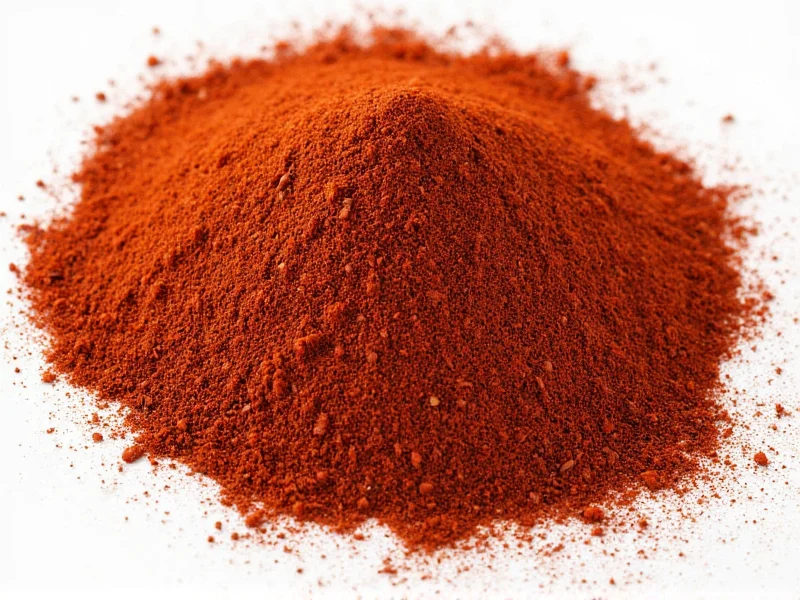Understanding how to properly substitute sumac spice is essential for home cooks exploring Middle Eastern, Mediterranean, and Levantine cuisines. This deep red spice, made from ground sumac berries, delivers a unique citrusy tang that elevates dishes from fattoush salad to grilled meats. When you find yourself without sumac, knowing the right replacement ensures your recipes maintain their intended flavor profile without compromising authenticity.
What Makes Sumac Unique
Sumac (Rhus coriaria) provides a distinctive sour yet slightly sweet flavor with subtle earthy notes. Unlike vinegar or citrus, sumac offers a more complex tartness without overwhelming moisture. This dry spice contains malic and citric acids that create its signature tang while contributing vibrant color to dishes. Professional chefs value sumac for its ability to brighten flavors without altering texture—a crucial consideration when seeking appropriate substitutes.
Top Substitutes for Sumac Spice
When replacing sumac, consider both flavor profile and physical properties. The ideal substitute maintains the citrusy tang while matching sumac's dry consistency where needed. Below are the most effective alternatives ranked by culinary application:
| Substitute | Ratio to Replace Sumac | Best For | Limitations |
|---|---|---|---|
| Lemon zest + paprika | 1 tsp zest + 1/8 tsp paprika per 1 tbsp sumac | Dry rubs, spice blends, garnishes | Lacks some complexity of sumac's earthiness |
| White wine vinegar + salt | 1 tsp vinegar + pinch salt per 1 tbsp sumac | Salad dressings, marinades | Adds liquid, not suitable for dry applications |
| Amchoor (mango powder) | 3/4 tsp amchoor per 1 tbsp sumac | Indian-Middle Eastern fusion dishes | Sweeter profile, less citrus-forward |
| Tamarind paste | 1/2 tsp paste diluted per 1 tbsp sumac | Stews, braises, complex sauces | Stronger flavor, requires dilution |
Recipe-Specific Substitution Guide
Successful sumac substitution requires understanding your dish's requirements. Consider these tailored recommendations for common applications:
For Fattoush Salad and Other Fresh Salads
When substituting sumac in traditional fattoush salad, lemon juice provides the necessary acidity but requires adjustment. Use 1 teaspoon fresh lemon juice plus a pinch of salt for every tablespoon of sumac called for. For better texture matching, combine lemon zest with a small amount of citric acid (available in canning sections) at a 3:1 ratio. This sumac spice substitute for recipes maintains the bright flavor while preserving the dry component essential for proper salad texture.
For Meat Rubs and Dry Seasonings
Dry applications present the greatest challenge for sumac replacement. For za'atar seasoning or meat rubs, create a sumac replacement for za'atar by combining equal parts dried lemon peel (finely ground) with a touch of smoked paprika. The lemon provides acidity while paprika contributes color. For grilled chicken or lamb, this combination delivers approximately 80% of sumac's flavor profile without adding moisture that could affect searing.
Avoiding Common Substitution Mistakes
Many home cooks make critical errors when seeking what to use instead of sumac in cooking. Avoid these pitfalls:
- Don't substitute straight vinegar in dry applications—it alters texture and can make spices clump
- Avoid using only lemon juice without adjusting salt content, as sumac contains natural sodium compounds
- Don't expect perfect flavor replication—sumac has a unique profile that can only be approximated
- Never use artificial flavorings as sumac substitutes for Mediterranean dishes—they lack complexity
Preserving Authentic Flavor Profiles
When exploring tangy spice substitutes for Middle Eastern cuisine, remember that sumac's magic lies in its balance of tartness and subtle fruitiness. For the most authentic results in dishes like musakhan or fattet hummus, combine multiple substitutes: use lemon zest for dry components and a touch of pomegranate molasses for finished dishes. This layered approach to sumac replacement for Mediterranean dishes creates a more nuanced flavor profile than single-ingredient substitutions.
Storing Sumac Properly
Preventing future substitution needs starts with proper storage. Keep sumac in an airtight container away from light and heat. Unlike many spices, sumac loses its vibrant color and tangy flavor relatively quickly—within 6-12 months. Check your sumac's freshness by rubbing a small amount between your fingers; fresh sumac should release a strong citrus aroma. Properly stored, high-quality sumac maintains peak flavor for approximately 9 months, making it worth purchasing from specialty spice retailers rather than generic grocery stores.
When Substitution Isn't Recommended
Certain traditional recipes rely so heavily on sumac's unique properties that substitutes significantly alter the dish. Authentic man'ousheh za'atar, Iranian torshi, and Lebanese sumac onions should ideally use genuine sumac. In these cases, consider making a special trip to a Middle Eastern market rather than compromising the dish's integrity. Understanding when not to substitute represents an important aspect of what to use instead of sumac in cooking—sometimes the authentic ingredient is worth seeking out.











 浙公网安备
33010002000092号
浙公网安备
33010002000092号 浙B2-20120091-4
浙B2-20120091-4